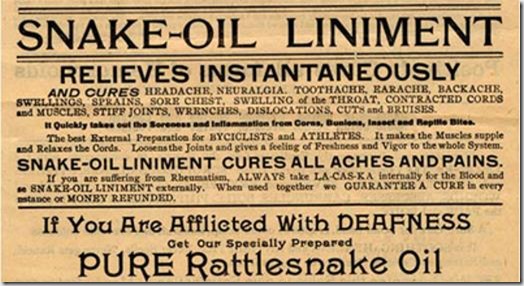Recently, I’ve been picking up comments from driving instructors admitting to stress and related health problems (ulcers, obesity, etc.).
I have to confess that when I got on the scales recently I almost lost 10kg there and then when I saw how heavy I was. It’s all due  to sitting down all day and not getting any exercise, and I am now on the Mother Of All Diets. Obesity, of course, is a health issue – although it can create or add to stress if you’re worried about it. But it IS something you can easily take control of if you make the effort.
to sitting down all day and not getting any exercise, and I am now on the Mother Of All Diets. Obesity, of course, is a health issue – although it can create or add to stress if you’re worried about it. But it IS something you can easily take control of if you make the effort.
When I was in the final throes of being in the rat race I was getting no recognition for my good performance. Extra work was being piled on to me. In one example I, as a scientist working with process formulation and manufacturing matters for biotech and pharmaceutical companies around the world, was forced to take on the work of an accountant who had left the company until the person they had earmarked to replace him became available. The woman they were waiting for was the wife of a middle manager elsewhere in the organisation, and when she eventually arrived the work I’d done was snatched away with not a word of thanks or congratulations by anyone involved, and she spent the next six months asking ME what to do! And then there were the increasingly stupid managers and policies (of which the accountancy story above is just one example) which prevented any of my other work getting done unless I put in unpaid overtime. Even if I’d stayed there, there was absolutely no chance that any of my work would ever have resulted in promotion – by that time my star had passed its ascendant. And if I had stayed, I’m certain it would have killed me, because the stress I was beginning to experience was totally outside my control. A high pressure job with no reward is a very unpleasant thing.
Stress is different though. Some people are more susceptible than others, and the health problems that result from it can be life-changing and life-lasting. Stress doesn’t always come with a fanfare, either – it can creep up on you, and you might not realise the toll it is taking until it’s too late. It can lead to heart disease, depression, and all kinds of other things.
My experience certainly echoes what the various authorities have to say about external factors such as your job leading to stress. And you might also be worried about your finances or your health, and this can also develop into stress.
However, there are internal factors to consider, as well. You may just be a negative person in the first place, or be a perfectionist who cannot accept their limitations or mistakes. You may find it difficult to plan and coordinate tasks, or look for fixed ideas as solutions to every problem and then be unable to manage the consequences. You may be introverted, and yet be expected to do extrovert things. The list goes on.
Becoming – and being – a driving instructor is potentially stressful from Day One. You may have chosen this career as a result of redundancy or difficulty getting a salaried job, and that raises the ante immediately. Only having three chances to pass Parts 2 and 3 of the exams is bad enough, but if you fear exams in the first place then the situation is much worse. Get through those and there’s the initial setting up of your business to consider. Where will the pupils come from – especially if you listened to the hype and went solo right away? Are you good enough at business matters to survive? Have you been realistic about your earnings profile both at the start, and after your workload stabilises? How will you cope when work drops off (which it always does at some point)? Out on the road there is the issue of pupils trying to total your car. There are other road users who can’t accept that a learner is in front of them, or has priority in a situation, and who behave accordingly – to which your pupil will respond in kind by panicking and trying even harder to total your car. There are homeowners who are convinced the boundaries of their property extend 100 metres in all directions beyond their fence, and who will cause trouble when you stop outside their house. Again, the list goes on and on. And most of these things remain issues every day that you are an instructor.
If you really know what you are doing you can deal with all that – certainly enough to prevent it resulting in stress-related illnesses. But the reason I wrote this article was because of some other comments I read about travelling times between lessons.
My ideal day is to have a two-hour lesson at 10am, another at 2pm, and one more at 6pm. Give me a full week of those and I am very happy indeed. The two-hour gap gives me time to go to the loo, have a snack, put my feet up, or go and do some shopping. A much less satisfying day is if I get six one-hour lessons, because that only leaves an hour between each, and that means rushing between them. So I was surprised to see someone claim that they leave half an hour or “even 45 minutes” so that they can go shopping, eat in a cafe, and/or take a toilet break. If you want to have stress creep up on you, that is one sure-fire way of letting it!
You see, with my “ideal day” I’d end up with 42 hours of lessons in a week, because I work 7 days a week (including evenings) if needs be. Of course, in reality I don’t always do 42 hours. I once did 60 (and it hurt), and at the start of last year when the recession finally caught up with me I did a few weeks in the low twenties (that hurt, too, but for different reasons). My average is typically in the range 30-40 hours – with the occasional weeks higher or lower than that.
I suspect that the problem lies with the minimum number of hours an instructor needs to work if they do this full-time. For it to be anywhere near worthwhile as a paying job you’ve got to do at least 25-30 hours a week. If you work 7 days a week that means an average of at least four hours a day, but if you don’t do evenings or weekends, the average daily hours rises to at least six. When you start trying to squeeze that in Monday to Friday daytimes you’re creating a problem for yourself, and the only way you can do it is if you start giving yourself silly 30-minute travelling times. Subsequently, that means timing your lessons to perfection (i.e. using a stopwatch and never over-running even by a minute). And this is for just 30 hours – you haven’t a hope in hell of fitting in extra lessons if pupils want them. There is no way you can do this job full time such that you are working literally ALL the time while you’re doing it, and do it to a high standard, if you are racing from one lesson to the next all the time. Heck, one of the main reasons I went for it was that you can “choose your own hours” – and you can, as long as you don’t interpret that as being able to pick and choose pupils as if they were controlled by a tap.
You can see how working in a rushed manner is going to create stress just by itself. But by treating pupils the way you’re going to have to treat them, and bearing in mind the way you might be behaving towards them if you’re already maxed out on the stress-o-meter by racing between lessons, you’re very likely to lose some of them. They aren’t going to give you a good review, and so over time your workload will quite possibly be adversely affected by it. And that leads to yet more stress. Believe me, I pick pupils up all the time who are surprised at how I conduct my lessons (in turn, I’m always surprised by what they have become accustomed to).
By leaving myself at least an hour between lessons (wherever possible) I can make sure I’m nice and relaxed at the start of each one, and I don’t have to worry about over-running by a few minutes. By not restricting my available hours in the first place I have no worries about being able to get my required number of lessons in. By being generous to pupils, it allows me room to negotiate when the need arises. So I am managing all the stressful parts of the job that I have the ability to directly influence. Plus, the extra work when it’s available covers me for time off when I need it and the lean times when the work isn’t quite as freely available.







 to sitting down all day and not getting any exercise, and I am now on the Mother Of All Diets. Obesity, of course, is a health issue – although it can create or add to stress if you’re worried about it. But it IS something you can easily take control of if you make the effort.
to sitting down all day and not getting any exercise, and I am now on the Mother Of All Diets. Obesity, of course, is a health issue – although it can create or add to stress if you’re worried about it. But it IS something you can easily take control of if you make the effort.